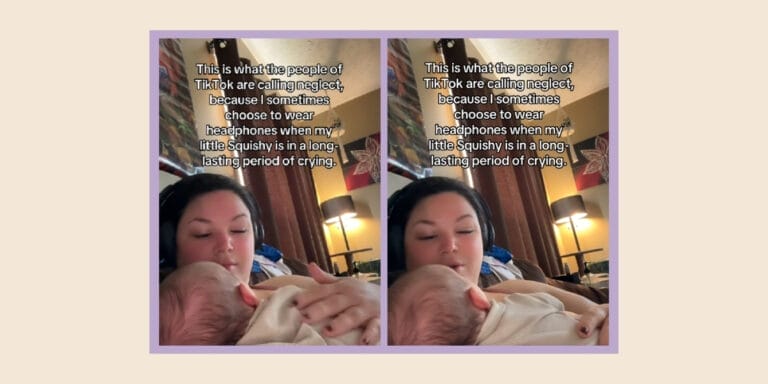Native American and Alaska Native mothers are dying and we need to talk about it

They are approximately 3.3 and 2.5 times more likely, respectively, to die while pregnant or as new moms than white women are.
Table of Contents
Some women are more at risk than others when it comes to being pregnant. Black moms are up to four times more likely to die from complications of pregnancy and childbirth and another group, Native American and Alaska Native women, are also dying from complications in childbirth at a disproportionate rate.
Native American and Native Alaskans make up just 2% of the total U.S. population but account for the second highest number of maternal deaths in the only industrialized country where maternal deaths, overall, are rising. They are approximately 3.3 and 2.5 times more likely, respectively, to die while pregnant or as new moms than white women are.
Alarming statistics released by the Centers for Disease Control and Prevention (CDC) in May 2019 show that between 2011–2015, black women had the highest maternal death rate at 43 deaths per 100,000 live births, followed by American Indian and Alaska Native women at nearly 33 deaths. Thirteen white mothers died in the same time period.
“Racial disparities in maternal mortality are staggering”
We’re raising awareness about #maternalmortality & sharing our efforts to eliminate preventable maternal deaths for… https://t.co/t3qaYlDpEA
— ACOG (@acog) 1553189638.0
“More women die in the US from pregnancy-related complications than in any other developed country,” the American College of Obstetricians and Gynecologists (ACOG) states on its website . According to the ACOG, the “racial disparities in maternal mortality are staggering…”
According to the CDC, 60% of maternal deaths are preventable. The leading causes of deaths during pregnancy, birth and the first year after childbirth include cardiovascular conditions, infection, and hemorrhage, but preventative strategies—including improving access to care and how it is coordinated and delivered—could save lives.
And in order to save lives, we have to acknowledge that Native American and Native Alaskan moms are dying because the health care system is failing them.
Meet Nicolle Gonzales
Nicolle Gonzales is a Dine’ Nurse-Midwife and the founder of the non-profit Changing Woman Initiative (CWI) , in Santa Fe, New Mexico. A Native American-centered women’s health collective, CWI aims to improve the health of expectant mothers, but Gonzales tells Motherly that she’s been frustrated by a lack of information around native women’s health available to medical professionals.
“When I attended conferences where they claimed to focus on Native American women’s health, I found them sharing data that did not tell the full story about why our health outcomes were so bad,” said Gonzales. “Further, blames seemed to be placed on native women and that it was their behavior that was the cause. I also saw the same old health frameworks being used to address known health disparities and then they would sit back and wonder why the outcomes were still terrible.”
Gonzales witnessed many Native American women struggling with navigating the western medical healthcare system throughout her career. She saw assimilation practices from birth and on, that stopped Native American families from “bringing their loved ones into this world in a culturally supported and ceremonial way.”
The disconnect helped inspire Gonzales to launch CWI in the fall of 2018.
Prenatal care can be culturally centered and accessible
It’s on a mission to renew cultural birth knowledge, promote reproductive wellness, to support healing through holistic approaches and to strengthen women’s bonds to family and community. The non-profit organization also provides training to increase the number of Indigenous midwives and encourage policy advocacy related to native women’s health.
Gonzales believes some of the reasons behind the higher rates of birth mortality in Native American women are socio/economically and culturally linked. There are longer wait times to see obstetricians and/or midwives in native communities because of the remoteness of some reservations, she explains. Sometimes it’s a lack of having a Medicaid card at the time of appointment, having no transportation or not making prenatal care a priority, Gonzales continues.
She believes taking the initial steps to seek medical care are crucial and wants to see moms better supported to do so. “First-trimester prenatal visits are very important. They identify health risks early, genetic screenings can be done sooner, and social circumstances and resources can be brought in,” Gonzales says.
According to Gonzales’ expertise, native women are at higher risk for adverse birth outcomes due to higher rates of gestational diabetes , hypertension , obesity , blood clotting disorders, drug addictions and limited access to healthcare education.
A less talked about cause of birth mortality rates for Native American women is intimate partner violence, she added. “There are limited places Native American women can go for safety and they are more likely to experience this or die from violence during their pregnancy.”
The Changing Woman Initiative
The CWI also provides expectant mothers with access to healthy foods, plants and traditional medicines and time with a traditional doctor commonly called ‘a medicine person.’ It’s a one-of-a-kind approach to a serious problem and the CWI is working to change the statistics from within its own community.
In the next three years, it aims to provide an Indigenous doula and peer counselor training to over 100 women in New Mexico. ![]()
The CDC study states that reducing pregnancy-related deaths requires reviewing and learning from each death, improving women’s health, and reducing social inequities across the life span, as well as ensuring quality care for pregnant and postpartum periods, and for providers and patients to work together to optimally manage chronic health conditions.
America cannot save the lives of Native mothers if it doesn’t understand why they are at risk, and supporting women who can provide culturally appropriate care—and listening to them—is vital.
You might also like:
- The Preventing Maternal Deaths Act is signed into law 👏
- This new bill aims to prevent maternal deaths—especially for black women
- Elizabeth Warren has a plan for the staggering black maternal mortality rates


































